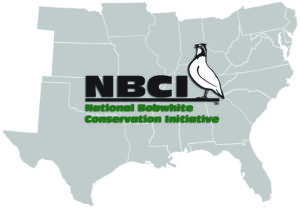Thomas V. Dailey, Ph.D.
NBCI Science Coordinator
The 2nd Bomb Cyclone in the Midwest and Great Plains is a reminder that snow and cold are likely triggering major mortality in bobwhites. Unlike the drama and immediacy of winter storms and flooding, the immediate negative effect on quail is not often obvious. In my Science blog last fall, “Secret Quail Locations,” I shared preliminary data indicating some Coordinated Implementation Program (CIP) projects in the Midwest had achieved very high quail abundance, a result of a combination of good habitat and mild winters and summers. In April, the Missouri Conservationist recognized a record-setting achievement over 40 years of quail measurements (https://mdc.mo.gov/conmag/2019-04/brief).
Severe Winter Weather
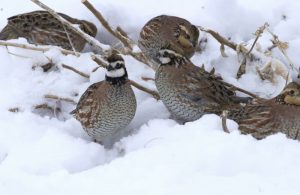
For decades, research findings have pointed to the short-term population-depressing effects of severe winter weather. In “Cyclicity in Northern Bobwhites: A Time-Analytic Review of the Evidence,” Thogmartin et al. observed bobwhite populations as “tumbling sharply in one year” (2002, freely available in NBCI’s National Quail Symposium, https://trace.tennessee.edu/nqsp/vol5/iss1/39/). The proximate cause of death is often predation, but the ultimate causes are environmental: lack of cover, increased foraging (and thus, increased exposure to predation), and malnourishment, making them easier to catch by predators.
Todd Bogenschutz, quail coordinator for the Iowa Department of Natural Resources (DNR), keeps track of >50 years of statewide bobwhite trends, with many instances of severe winter and subsequent population response. Todd and Iowa DNR have been reporting very high bobwhite abundance the past few years, including on the Ringgold and Shawtee Wildlife Management Area CIP projects in southwest Iowa. Todd predicts a decline in quail in fall 2019.
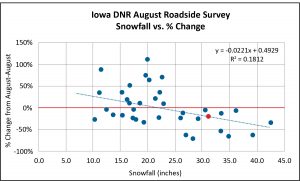 The Iowa August Roadside Survey (ARS) through 2018 shows that the percentage change per year in the quail count has been less than zero following winters with >25 inches of snow; the red dot is a prediction for the percent change this August, based on the 32 inches of snowfall through March. In other words, so many bobwhites will likely die that reproduction this summer will not return the population to the high level measured via the CIP on Ringgold and Shawtee in the fall of 2018, i.e., “tumbling sharply in one year.”
The Iowa August Roadside Survey (ARS) through 2018 shows that the percentage change per year in the quail count has been less than zero following winters with >25 inches of snow; the red dot is a prediction for the percent change this August, based on the 32 inches of snowfall through March. In other words, so many bobwhites will likely die that reproduction this summer will not return the population to the high level measured via the CIP on Ringgold and Shawtee in the fall of 2018, i.e., “tumbling sharply in one year.”

Coincidentally, Iowa DNR hosted a CIP workshop January 8-10, 2019, just prior to the onset of five continuous weeks of snow cover on Ringgold and Shawtee CIP focal areas. A major topic of the workshop was protective cover. Little did we know the remainder of the winter would provide an excellent test of CIP and protective cover.
CIP and the Three Little Pigs
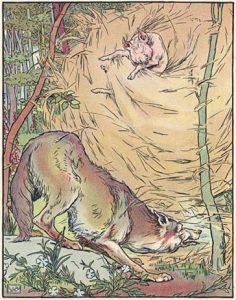
The children’s tale The Three Little Pigs illustrates a key CIP habitat concept. Small critters require protection from the elements and their enemies that threaten to “huff and puff and blow your house down.” Only the Pigs’ brick house could withstand the wind and the wolf. Likewise, for bobwhites, the best-structured habitat—“protective cover” in CIP terminology—will reduce winter mortality.
CIP is designed around the best habitat, in this case to help quail survive inevitable winter bottlenecks in the snow/cold range. Key factors are availability of protective cover in the form of low-growing woody vegetation, and tall herbaceous vegetation with plenty of bare ground to provide easy foraging for high-energy seeds. Both are conducive to survival during winter, enabling bobwhites to maintain a relatively positive energy balance and avoid predation. Decades of research indicates protective cover is paramount in winter, from Texas to New Jersey. These concepts are explained in the NBCI technical website under “Training,” https://www.quailcount.org/monitoring/habitat.html. Click on “Habitat Characteristics” for a narrated slide show, videos, and a pop quiz.
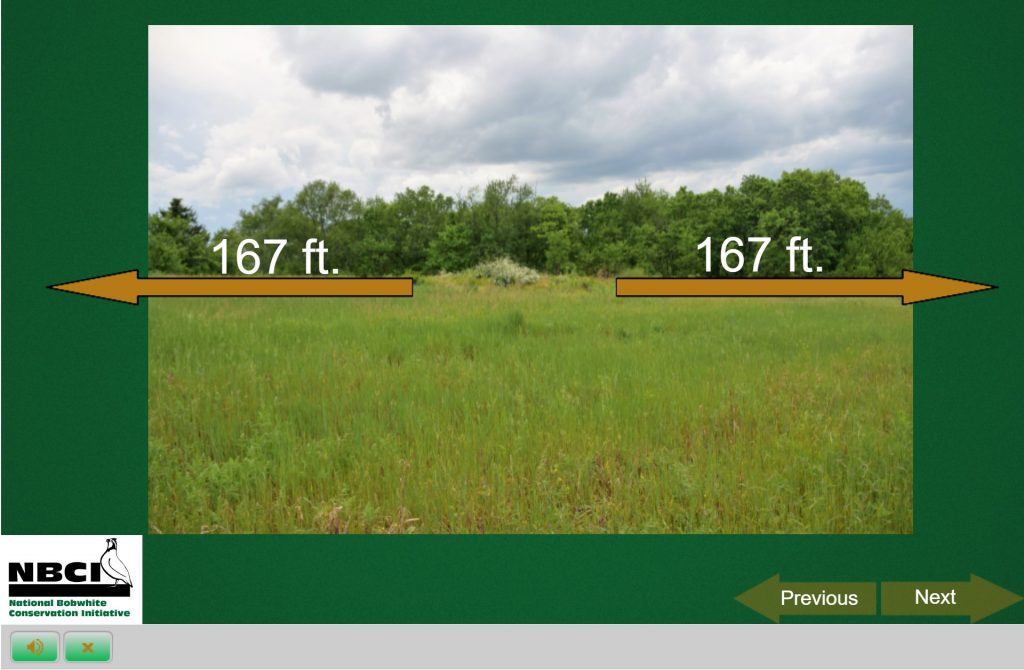
What We Know So Far
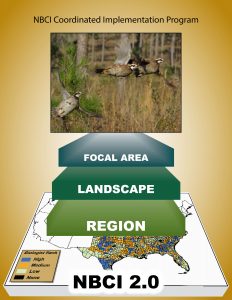 CIPs in Iowa, the 2C and Bee Ridge CIPs in Missouri, and Nebraska’s Meridian CIP are measuring quail abundance annually in June and October, providing insight about the loss of quail due to winter conditions and subsequent recovery during the nesting season. CIP does not provide immunity to quail from effects of weather; however, we expect population dynamics are shifted upward—higher lows and higher highs.
CIPs in Iowa, the 2C and Bee Ridge CIPs in Missouri, and Nebraska’s Meridian CIP are measuring quail abundance annually in June and October, providing insight about the loss of quail due to winter conditions and subsequent recovery during the nesting season. CIP does not provide immunity to quail from effects of weather; however, we expect population dynamics are shifted upward—higher lows and higher highs.
CIP is a long-term commitment by partners to restore quail and provide huntable quail populations. CIP projects run for 10 years, and those hardest hit by the past winter still have until 2022-23 to test CIP’s year-round production and survival concepts. Stay tuned as findings from CIP are published, beginning with this fall’s 2019 NBCI Bobwhite Almanac


